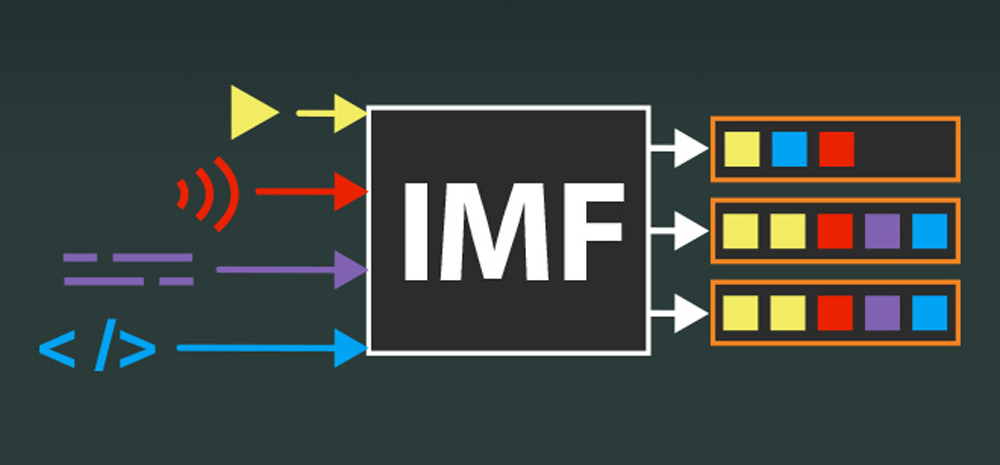
Broadcasters Still Hesitate On IMF, But UHD May Help

As the media industry embraces digital supply chains, the potential of the Interoperable Master Format (IMF) as a way to standardize professional content delivery to all platforms and geographies still remains unfulfilled.
While major studios and streaming platforms have fully embraced IMF, adoption is still scant among both U.S. and international broadcasters. And IMF insiders don’t expect that to change anytime soon, though the SMPTE standard could get a boost from both broadcasters’ move to Ultra High Definition (UHD) programming and the gradual shift of their operations from on-premise hardware to the cloud.
The basic premise of IMF is to facilitate the reversioning of content for different languages, different countries’ content standards or different platforms like in-flight entertainment by “componentizing” the master of a piece of content. That means separating the main video file from multiple audio tracks, subtitles and other metadata about the piece of content, including information about previous edits.
IMF’s componentized approach allows for multiple versions to be created without duplicating the main video file in a completely separate master, thus speeding mastering and delivery times, reducing storage costs and minimizing the number of quality control (QC) steps that are performed.
Componentized Video Value

Janet Gardner
“What the broadcast community has come to is to start to understand the value of componentized video, where we’re dealing with elemental media assets—foreign language tracks, textless audio and closed captioning—and everything’s an element,” says Janet Gardner, president of consulting firm Perspective Media Group. “So, I can recompose it any way I need to for any platform, not just for broadcast. The push to multiplatform is the driver, where broadcast is just one of the distribution channels.”
In an IMF master, or “Composition,” the individual components carrying a single “essence”— audio, video, text or metadata — are called “Track” files and use a simplified version of the Material eXchange Format (MXF) file format.
All of the information about an IMF master file is contained in an XML-based “Composition Playlist,” which assembles the Track Files onto a timeline and contains timeline-related metadata. The Composition Playlist (CPL) can be thought of as a forensic accounting of everything that happened with a piece of content to that point. It can also be easily adjusted in the future with the receipt of a new CPL with additional Track Files, such as an audio dub in a different language or a video file with a different graphic open to a program.
The flexibility of IMF, which was ratified by SMPTE in 2018 and is an evolution of the Digital Cinema Package (DCP) standard, is of huge benefit to a studio like Sony Pictures Entertainment, which uses IMF to create 4K HDR masters of its feature films and then reversion them for international distribution. Instead of having to create a separate full audio and video master for each foreign-language version of a movie as it did in the past, Sony can now use one video essence, with minor modifications, and simply create different audio tracks, drastically reducing storage requirements either on-premise or in the cloud.
Simplified Quality Control

Julián Fernández-Campón
The QC process for studios is also greatly simplified by IMF, says Julián Fernández-Campón, chief technology officer of Tedial, a MAM vendor that works with Sony and makes an IMF-compliant ingest, archive and delivery system called “Hyper IMF.”
“The QC process is much faster, because you only have to focus on the parts that are new,” Fernandez-Campon says. “Because the other parts, they are already validated.”
IMF has also been championed by the streaming giant Netflix. Netflix has adopted IMF as its delivery standard for all UHD content and uses it to repurpose hit shows like the Korean-language Squid Games in a bevy of different languages.

Bruce Devlin
“In this area, they’re a really good yardstick for what you can do if you make the cost of internationalization only marginally greater than the cost of premier distribution,” says SMPTE VP of Standards and MXF expert Bruce Devlin. “Because they have a complete global infrastructure for internationalizing everything at scale, they can take Squid Games, which is Korean, and version it as and how they like. Because they have this massive network of people who subtitle, dub and do compliance things.”
Reticent Broadcasters
The payoff of IMF is less tangible to U.S. broadcasters, which often don’t directly own their entertainment content and are only dealing with one or two languages for distribution. The same goes for most of their international counterparts. Out of major international networks, only the BBC has adopted IMF in a big way, announcing last summer that IMF would be its delivery and mastering standard for all UHD (4K and 8K) content.
Fernandez-Campon says that IMF is poorly understood by most European broadcasters, with the exception of the U.K. and the Netherlands. While his own country of Spain has four different regional languages, there is no adoption of IMF.

Erik Ahlin
That view is echoed by Erik Ahlin, co-founder and CEO of Vidispine, a competitor in the MAM space that was an early adopter of IMF. Ahlin is somewhat surprised there hasn’t been more adoption of IMF in Europe, because there are so many different countries and languages in a compact footprint compared to North America.
“For example, the Nordic region,” Ahlin says. “Five different languages, five different public broadcasters, 10 different commercial broadcasters and so on — but they still share a lot of content between the Nordic countries. IMF here would be a pretty smart thing to do between the public broadcasters.”
With its stable of international networks and early move to cloud playout, Discovery would seem to be an obvious user of IMF. But the cable programmer doesn’t actively use the mastering standard. Instead, it has developed its own proprietary componentized video system, working in conjunction with media software vendor SDVI (though Discovery has the ability to deliver IMF if necessary).

Simon Eldridge
Simon Eldridge, co-founder and chief product officer for SDVI, doesn’t find many broadcasters who are bullish on IMF today.
“It’s certainly an opportunity for savings, but the number of people handling tens or a hundred different versions of a file is relatively small,” Eldridge says. “It has value, but for a small number of people. I think that’s why the studios have hooked onto it as much as possible. They’re the ones creating the masters and doing international distribution copies, and they’re the one who are doing hundreds of different versions. For them, it is a significant storage savings.”
Justin Beaudin, CTO and head of media operations for media processing and delivery firm Vubiquity and a former executive at Deluxe Entertainment and NBC Universal, says his company deals with only a smattering of IMF content today but he expects that to grow in the future.

Justin Beaudin
“Part of that is because a lot of us built our systems before IMF existed,” Beaudin says. “We componentized everything in order to create our own automation without IMF. We solved it at NBCUniversal, and we solved it at Deluxe, and we’ve solved it at Vubiquity as well. Now that we’re going to go through that cloud transformation, maybe we get another shot at doing it.”
UHD Presents Opportunities
Devlin says that once a media company starts to deal with eight or more versions of a piece of content, then IMF starts to become very cost-effective. But he agrees that broadcasters aren’t looking to scrap existing HD workflows to bring them to IMF, particularly when it comes to HD streaming services many are launching simply to reduce viewer churn to new digital competitors. Instead, he says broadcasters are looking ahead to “greenfield” opportunities, like the BBC’s adoption of IMF for UHD.
Arjun Ramamurthy, global CTO for media supply chain vendor Ateliere and a former SVP of technology for 20th Century Fox, agrees that UHD is a logical place for broadcasters and other media firms to start tackling IMF. He says that was the approach the Fox studio took, leaving existing HD workflows alone but doing UHD (4K and HDR) in IMF.
“If you’re going into UHD you’re changing so many things, you’re almost better off saying I need to make a conscious decision of utilizing a componentized workflow and the IMF model,” Ramamurthy says.

Arjun Ramamurthy
Ramamurthy adds that many broadcasters saw IMF as being too studio-centric, particularly with the standard’s early focus on the JPEG-2000 lossless codec that is favored by studios but unpopular with many broadcasters.
He says SMPTE’s work with the Advanced Media Workflow Association (AMWA) and the Digital Production Partnership (DPP) to include the ProRes codec and HLG format for HDR content in IMF (through the new Recommended Practice 59) should help sell broadcasters on the format.
Near-Term Opportunities
Ateliere, which counts MGM Studios, A&E Networks and HBO Max among its customers, also sees a near-term opportunity for IMF in archiving, taking standard multiversion linear files and “reverse-engineering” them into component workflows that are IMF-compliant. Doing so can greatly improve the usability of the archive in repurposing content for OTT or AVOD distribution, says Ramamurthy, who also emphasizes the cost savings in QC that componentized workflows can achieve over time.
“If you want to start with the notion of, I don’t want to change anything in my workflow, but I want to get it to the waters of IMF and see all of that, then I can do it from an archival standpoint,” he says. “Where I can stack all of my extra versions and take advantage of all the parts and pieces, and now I have an archive I can very easily repurpose.”
Vidispine had created its own componentized data model for media assets years before IMF was created. Now the company is helping customers work in IMF, including ingesting legacy content and deconstructing it to make it IMF-compliant. Ahlin’s advice to prospective IMF adopters is to take it slowly.
“My recommendation is that you think of it as how do you make your supply chain more efficient, more accurate and faster,” Ahlin says. “If you can crack that code, I think IMF can be a great facilitator if you do implement it wisely. I would also start small and then make it more advanced, rather than trying to do everything in one go. Look at where you can do quick wins and then go from there. And don’t complicate it.”


































Comments (0)